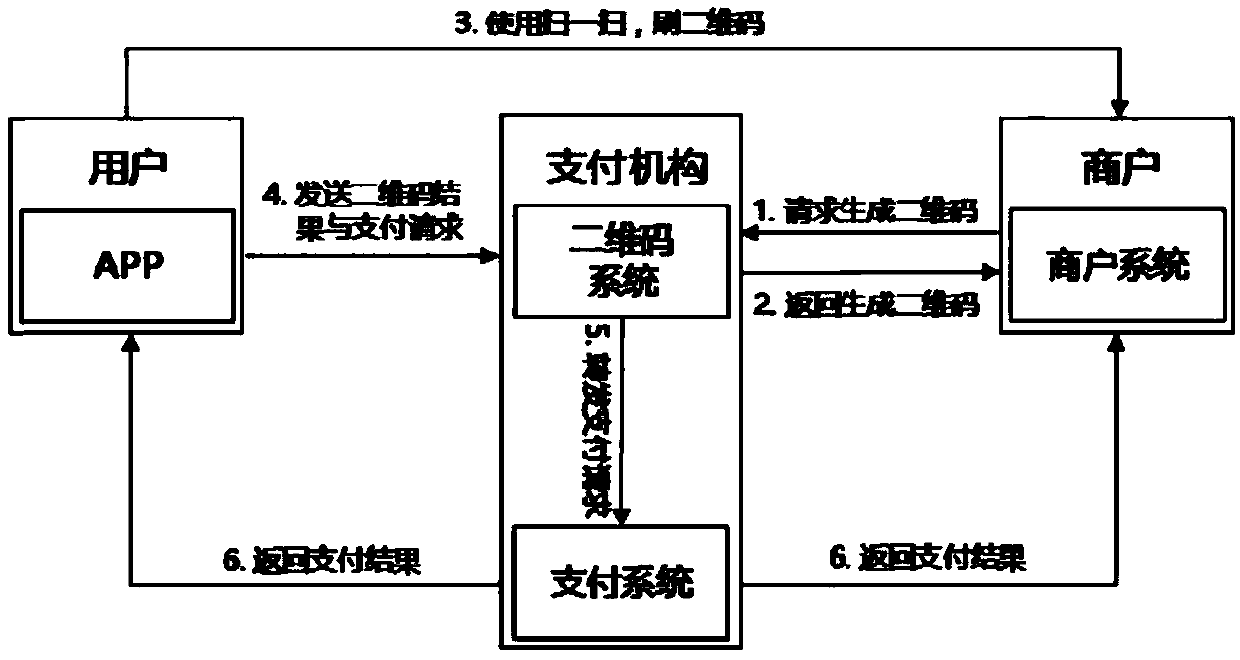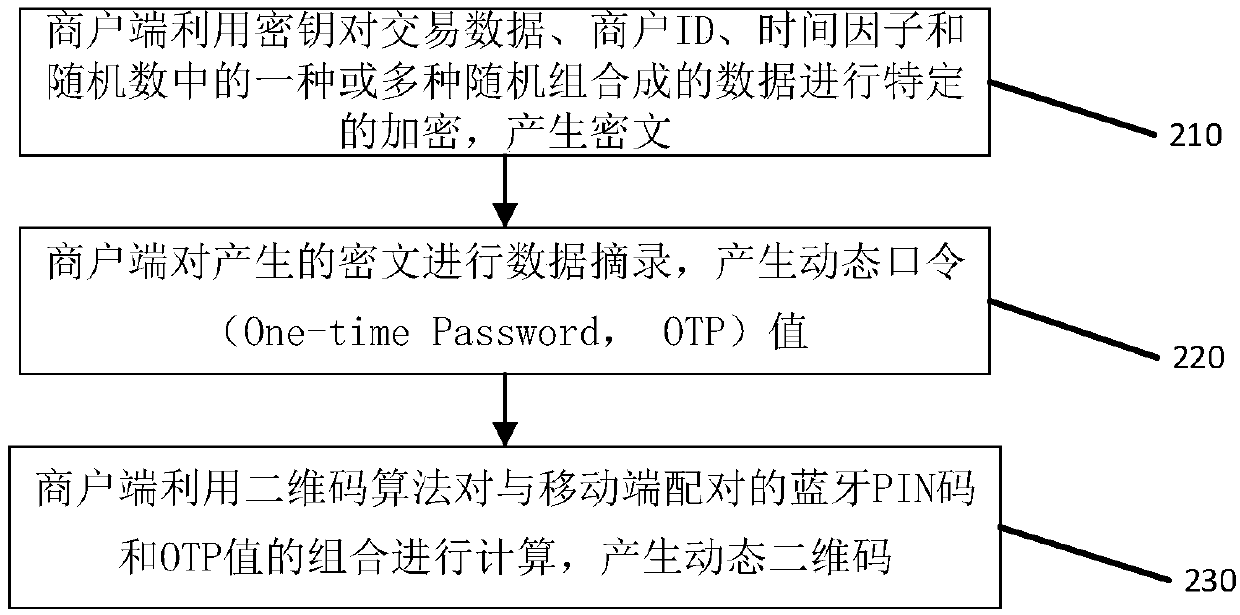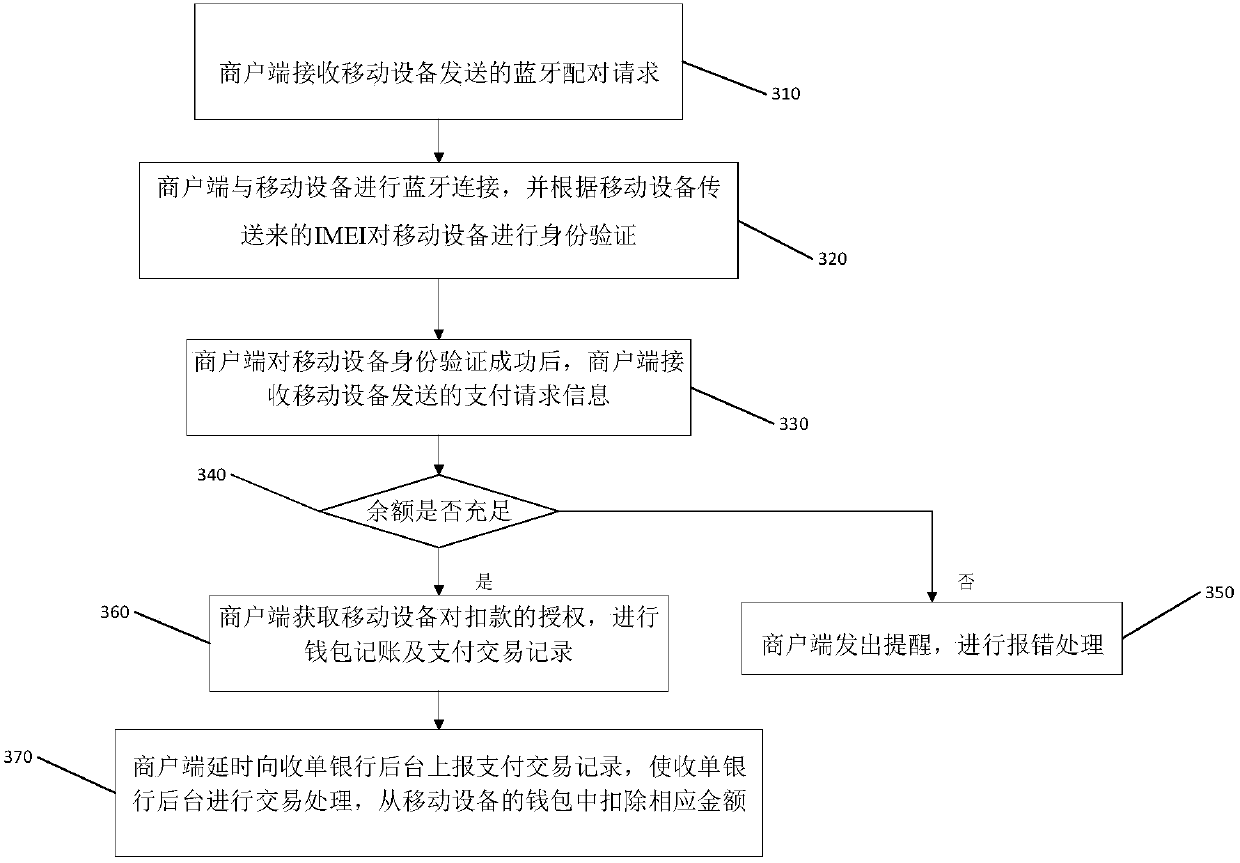Mobile payment method and checkout terminal thereof
A mobile payment and terminal technology, applied in the payment field, can solve problems such as the inability to guarantee the quality of network communication
- Summary
- Abstract
- Description
- Claims
- Application Information
AI Technical Summary
Problems solved by technology
Method used
Image
Examples
Embodiment 1
[0031] like figure 2 As shown, wherein the dynamic two-dimensional code generation process includes the following steps:
[0032] Step S210: The merchant uses the key to encrypt data randomly combined with one or more of transaction data, merchant ID, time factor and random number to generate ciphertext.
[0033] Wherein, the random number is generated by a random number generator in the merchant terminal.
[0034] Step S220: The merchant terminal extracts data from the generated ciphertext to generate a One-time Password (OTP) value.
[0035] Step S230: The merchant uses a two-dimensional code algorithm to calculate the combination of the Bluetooth PIN code and the OTP value paired with the mobile terminal to generate a dynamic two-dimensional code. The generation algorithm of the two-dimensional code adopts the existing algorithm.
[0036] Preferably, the dynamic two-dimensional code is updated within a specified time interval. As an example, the dynamic two-dimensional...
Embodiment 2
[0044] In this embodiment, both the merchant end and the consumer end are offline.
[0045] like image 3 As shown, the offline payment at the merchant side specifically includes the following steps:
[0046] Step S310: The merchant terminal receives the Bluetooth pairing request sent by the mobile device.
[0047] Step S320: The merchant terminal establishes a Bluetooth connection with the mobile device, and performs identity verification on the mobile device based on the IMEI transmitted by the mobile device (it can also be verified according to other information transmitted by the mobile device).
[0048] Step S330: After the merchant terminal successfully authenticates the identity of the mobile device, the merchant terminal receives the payment request information sent by the mobile device.
[0049] As an embodiment, the payment request information includes transaction amount and wallet balance.
[0050] Step S340: The merchant side judges the balance of the wallet of ...
Embodiment 3
[0077] In this embodiment, the merchant end is offline and the consumer end is online.
[0078] The specific steps for the merchant to go offline are as follows: image 3 As shown, no further details are given here.
[0079] like Figure 5 As shown, the consumer connection specifically includes the following steps:
[0080] Step S510: The mobile device scans the dynamic two-dimensional code of the merchant, and extracts the OTP value and the Bluetooth PIN code of the merchant from the dynamic two-dimensional code.
[0081] Step S520: The mobile device initiates an identity verification request to the background system of the issuing bank.
[0082] After the verification of the mobile device is passed, step S530 is executed: the mobile device inputs the transaction amount, and initiates a payment request to the background of the issuing bank.
[0083] Step S540: If the payment request is passed, the mobile device receives a payment password input instruction, and the user i...
PUM
 Login to View More
Login to View More Abstract
Description
Claims
Application Information
 Login to View More
Login to View More - R&D
- Intellectual Property
- Life Sciences
- Materials
- Tech Scout
- Unparalleled Data Quality
- Higher Quality Content
- 60% Fewer Hallucinations
Browse by: Latest US Patents, China's latest patents, Technical Efficacy Thesaurus, Application Domain, Technology Topic, Popular Technical Reports.
© 2025 PatSnap. All rights reserved.Legal|Privacy policy|Modern Slavery Act Transparency Statement|Sitemap|About US| Contact US: help@patsnap.com



